
|
 |
Attractions Management Handbook - Attractions Foresight™ 2015/16

Future view

|
|
| Attractions Foresight™ 2015/16
|

What’s coming down the track for attractions? Attractions Management examines the trends, technologies and strategies which will help shape the future
|
|
|
1. Underground attractions
2. Biofeedback
3. Vintage
4. Dressing up
5. Dementia-friendly design
6. Design for obesity
7. Ride gamification
8. Invisibles
9. Interactive planetariums
10. Extreme water
11. Africa
12. Halal tourism
13. Beacons
14. Attractions & spa
15. Cuba
16. China innovates
17. Tech backlash
18. Panama
19. Retail customisation
20. Attractions real estate
|
|

|
Subterranean

1. Underground attractions

High-up attractions have dominated the news over the last three years – giving customers an adrenaline rush without much, if any, physical exertion or risk.
Now adventure attractions are going underground, using existing cave systems and quarries or creating new ones.
Into the Glacier is Iceland’s latest opening, with backing from one of the country’s leading pension funds. Guests are transported on an ex-NATO missile launcher to the man-made ice caves deep in the Langjökull glacier, where they can admire the naturally occurring blue ice.
Bounce Below in Wales, UK, offers a completely new type of attraction. A chasm above a massive slate quarry is home to three giant trampolines reached by an underground train, while Zip World Caverns enables daredevil tourists to enjoy an underground assault course of zip lines, rope bridges, obstacles and tunnels.
| |
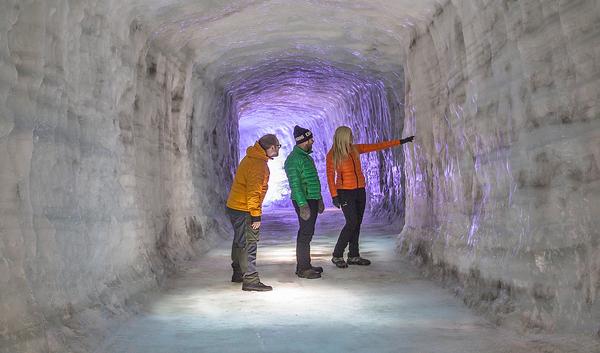

|

Iceland’s Into the Glacier attraction takes visitors deep into the ice |
|

|
Customisation

2. Biofeedback

Ride designers are creating ever-more immersive and thrilling experiences thanks to emerging technology. Computer-controlled robotic systems can even steer individual seats using biofeedback.
By measuring involuntary responses like breathing, rides can automatically adapt to riders’ reactions. For example, elastic chest sensors integrated in ride seat safety harnesses, can physically and psychologically ‘push back’ at riders while they struggle to control the ride and their own bodies, resulting in an engaging experience that’s thrilling and responsive.
Alternatively, breath-control masks with built in respirator flow sensors and microphones that capture breath rates and vocal responses can be used to enhance the intensity of everything from culture to horror rides and experiences.
UK-based games studio Slingshot Effect is keen to realise the value of bio-sensor technology. Next spring it will launch a bio-activated horror maze called Hyde - themed on Robert Louis Stevenson’s novel Dr Jekyll and Mr Hyde.
Bio-sensors fitted to participants will be linked to actuators in the maze, such as locks, lights and motors. Each player must control their heart rate, breath and posture to trigger them – breathing on a lock opens it or raising the heartbeat changes the music, for example.
| |
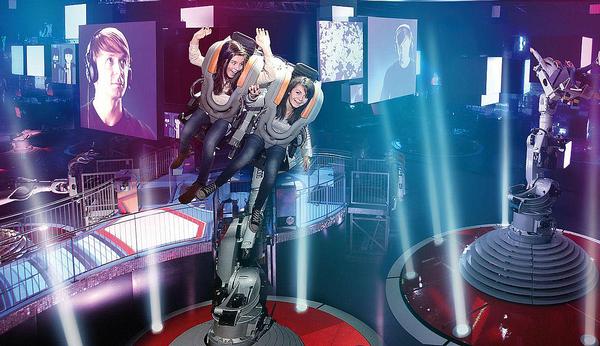

|
| photo: dancing with robots, futuroscope |

Biofeedback will be added to rides to give a personalised experience |
|

|
New Spin

3. Vintage

It’s happening with fashion and dining, and now it looks as though vintage is coming to the attractions industry.
Plans are in the works to revamp the New York State fair with a heritage feel and the reopening of Dreamland in Margate, Kent, UK – with design by Wayne Hemmingway – is further evidence of the growing popularity of the vintage design ethos.
The trend ties in with our dressing up trend (see Attractions Management Foresight 4) where attractions visitors chose their attire to tie in with the theme of the attraction they’re visiting.
Vintage also works well for F&B and retail. We expect it to grow in all areas.
|

|
Special Occasion

4. Dressing up

Disney fans kicked off the trend by dressing up as their favourite character to visit the theme parks – Minnie Mouse being a favourite.
We expect the dressing up trend to spread more widely to the market and begin to make appearances at a wide range of attractions types as operators work to increase visitor engagement, extend the impact of the visit to before and after and build a tribe of engaged fans and advocates around their brands.
Operators who encourage this trend can use it to add another dimension to customers’ visits.
|

|
Ageing population

5. Dementia-friendly design

The ageing global population will prompt rapid growth in dementia-friendly design.
Well thought-out colour and décor schemes are needed for those who have problems with depth perception and visual processing, for example. Patterns on the floor may appear to be a trip hazard and this momentary confusion can cause them to stumble and fall.
People with dementia have difficulty remembering things and building up familiarity with where things are, so appropriate signage is important. Their more recent memories are lost first, so if toilet signs are a variation on the stick man that was common in the 60s, it might be meaningless to someone whose memory stops before then, for example.
Attractions which cater for extended families will find it especially important to adopt this approach to ensure the whole family can enjoy their visit
| |


|
| photo: SHUTTERSTOCK/Monkey Business Images |

Attractions which aim to attract three generations will be among those to benefit |
|

|
Fat Planet

6. Design for obesity

The World Health Organisation has classified obesity as an epidemic and attractions need to gear up to accommodate this.
We’re already seeing a trend towards strong domestic markets for obese people who are unable to fly due to their size and we expect attractions to find they are increasingly catering for two distinct groups of customers among their clientele – obese domestic and non-obese tourist groups. Each has very different needs in terms of both design and operations.
In museums and other non-theme and water park attractions the obese need wider corridors and bigger turnstiles and toilet cubicles as well as places to sit.
The biggest pressure comes in theme parks and waterparks where obese riders need plus-sized seats and redesigned rollercoasters, ride systems and flumes.
We expect the US to lead the world in obesity design, with the provision of extended seat belts, extra-large seats, more buoyant boats on water rides, and deeper, wider flumes.
Where rides can’t be modified, sample seats enable overweight visitors to try them for size before queuing in vain.
Staff can be trained in how to deal with this sensitive issue and websites can prepare visitors before their arrival by posting weight ride restrictions, in addition to the more usual height restrictions listed.
| |


|
| photo: FOTOLIA.com/Kletr |

We expect the US to lead the world in obesity design |
|

|
Layered experiences

7. Ride gamification

Developers have been testing the use of the Oculus Rift VR system on rollercoasters to enable interactive games to be installed, with a leaderboard for all to see and try to beat.
The application of gameplay elements to other areas of activity in the industry can turn a rollercoaster into a space battle or make learning fun for youngsters. This will be used as a tool to draw in a larger audience – young and old – as the industry looks at new ways to increase numbers and satisfaction. The idea of using games to bring visitors back will work hand-in-hand with the development of virtual and augmented reality technology.
|

|
The new wearables

8. Invisibles

As wearables innovators and activity app developers such as Jawbone, FitBit and Strava battle for market share, the next phase of activity and wellness monitoring is already being imagined and prototyped quietly behind closed doors.
We’ll move from a time of wearables to a new evolution in body computing – the age of invisibles – when sensors are integrated into the body to give a continuous data stream and establish a complete picture of what’s going on with our responses. This will remove the need to carry clonky devices and enable integration with other tech.
|

|
Focus for Innovation

9. Interactive planetariums

We expect planetariums to become more interactive by embracing a range of complementary technology.
Dome theatres will offer film-quality visuals that can be customised to create immersive, realistic experiences.
They will also be gamified, so individuals can meet and interact in alternative universes of their own making. VR will be incorporated to add further dimensions to the experience.
Live presentations and visualisations created in one planetarium are increasingly re-packaged and distributed online and to other planetariums, meaning visitors can enjoy more interaction and a greater sense of community.
The potential for planetariums to be used as immersive educational platforms outside astronomy – for example, Sciss’s Neurotours, a neuroimaging visualisation based on real brain data – will be realised.
| |
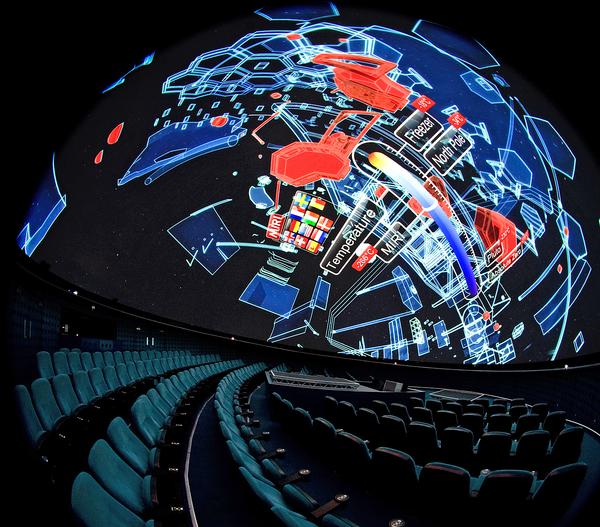

|

Planetariums are becoming interactive, with high-quality dome theatre systems |
|

|
Thrills

10. Extreme water

Waterpark suppliers are pushing the boundaries, as teenage and adult visitors seek the same type of high-adrenaline experience they get at a theme park.
To meet the demand, ride designers are getting more creative, filing more patents and pioneering new techniques in fabrication and structural engineering.
Robotics and advanced computer modelling software are also aiding ride designers in the hunt for new and bigger thrills.
Waterpark suppliers are offering hybrid rides which offer creative ride paths that can be customised around the park’s site and requirements. It’s about taller, faster slides, zero gravity drops, and incorporating elements from other types of rides like roller coasters.
Sky Turtle Technologies has even developed a prototype for a looping waterslide. Riders will travel inside an aluminum capsule, bolted in by lap restraints, to enable a fully vertical loop for the first time. Corkscrews, multi-lane and multi-loop waterslides not dissimilar to rollercoasters are likely to follow.
Waterpark attractions will also be enhanced by gaming technology, where riders can play shooting or racing contests in a digital environment. We expect waterparks to be developed with gaming and competing being central to a fully immersive experience.
| |
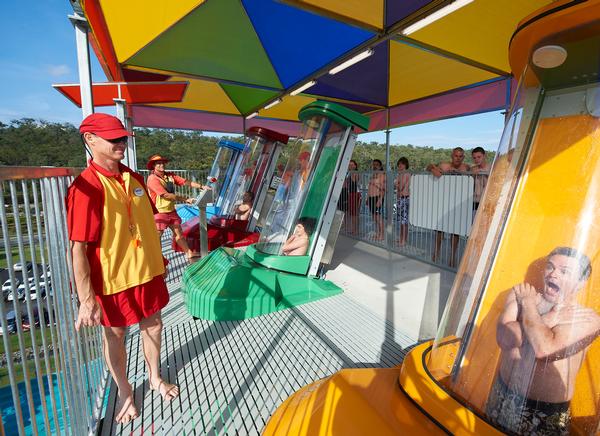

|
| photo: Wet n Wild Gold Coast |

Waterpark designers are pushing the boundaries of engineering to create bigger and bigger thrills |
|

|
in sight of change

11. Africa

Back in 2003, Goldman Sachs coined the term BRIC – the acronym for Brazil, Russia, India and China – to group together what it predicted would be the world’s dominant economies by 2025.
Next the CIVETS were identified as being the ones to watch: Columbia, Indonesia, Vietnam, Egypt, Turkey and South Africa – the acronym was coined by Robert Ward at the Economist Intelligence Unit to predict the next emerging economies.
We think much of the rest of Africa will show exciting growth over the next two decades, with the attractions industry identified as a driver for both domestic and inbound tourism.
|

|
A Global Market

12. Halal

Muslims spent US$140bn on international travel in 2013, representing almost 13 per cent of global travel expenditures, according to a report by Crescent Rating. The agency is one of a growing number of firms that rate facilities on their adherence to Islamic traditions, such as no alcohol and gambling, serving halal-certified food and offering gender-segregated leisure facilities. Spas in Muslim countries already offer separate male and female areas, but we predict further segregation in design and in facilities outside these regions as the growth of halal tourism picks up pace.
|

|
Instant connections

13. Beacons

Beacon technology is about to change the way we look at attractions and open up opportunities for enhanced experience design and increased monetisation.
The proximity-based technology transmits a signal – primarily through Bluetooth or wifi – to smartphone or tablet and delivers information directly to the palm of the hand. The ability to send targeted information to customers as they walk past certain hotspots, essentially turns handheld devices into responsive tour guides or advertising boards.
A February 2015 analysis on the impact of beacons by Business Insider hailed it as “one of the biggest developments since wifi”, saying that if used as an advertising tool in the retail industry, it could have an immediate impact of US$4bn (€3.8bn, £2.7bn) in the next year.
We expect attractions to install beacons during their next investment cycle.
| |
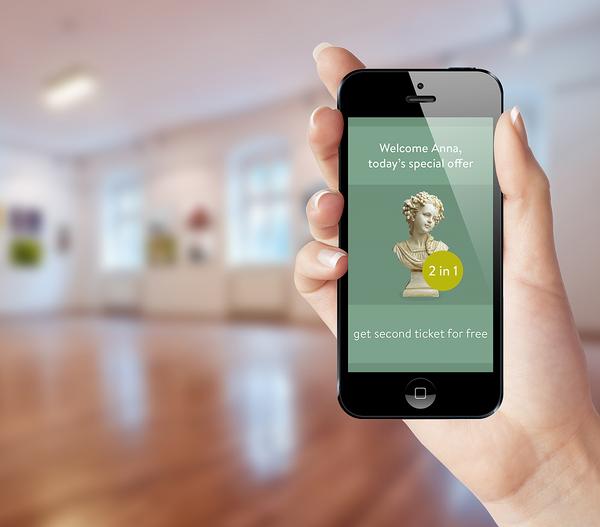

|

Beacon technology is about to change the way we look at visitor attractions |
|

|
A New Partnership

14. Attractions & spa

We believe the technology used within the attractions industry has huge potential for use in the development of spa and wellness facilities and expect significant collaborations to emerge in this sector.
Innovations such as immersive environments, virtual reality, haptic technology, facial recognition software and augmented reality could all be deployed to create amazing experiences for customers within the spa and wellness industry.
In addition, the attractions industry’s expertise in creating vivid customer journeys and high levels of engagement can also be used by spas to heighten and elevate the experience being delivered.
Other overlaps could include the use of 360 degree screens and multimedia to deliver ambience or to create another layer to the spa experience.
In another application, Asian skincare brand AmorePacific, has worked with BRC Imagination Arts to create an award-winning brandland in South Korea that mixes a spa theme and visitor attraction.
The Story Garden attraction opened in late 2013 and is located at AmorePacific’s Beauty Campus, along with a botanic garden and art museum. It won a TEA Outstanding Achievement accolade at the Thea Awards in 2014 in recognition of its innovative approach. We expect more spa and attractions tie-ups to follow.
| |
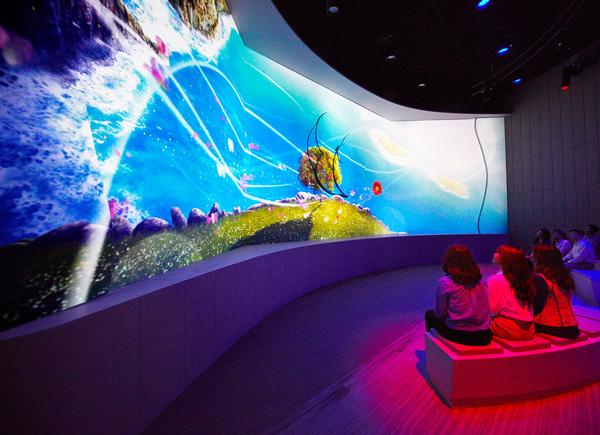

|

BRC Imagination Arts worked on the Amore Pacific visitor attraction for the global spa brand |
|

|
Facie praelis

15. Cuba

Tourism is set to take off in Cuba as diplomatic relations with the USA thaw for the first time in 30 years. In April, President Obama recommended the country be taken off the USA’s terrorism list, and the number of Americans who are visiting Cuba has already increased significantly – by 36 per cent – since the start of the year, according to The Associated Press. While business and tourist embargoes with the USA remain intact, spa investors who strike up partnerships in the communist country now will be ahead of the game.
|

|
New competition

16. China innovates

With its manufacturing capacity and low cost base, China pumps out vast quantities of goods for world markets.
However, much of the design for these is done in the West and China has always been light on its ability to innovate – especially in the attractions sector, with most equipment and materials being designed by US and European companies.
However, with Disney and Universal now both building in China and sourcing materials and equipment from local fabricators – educating them in the process, we expect new Chinese suppliers to emerge on the world stage, offering world class products and creating new competition.
|

|
Physical world

17. Tech backlash

As attractions embrace new technologies and increasingly envelop visitors in digital and virtual worlds, they need to consider how to also provide meaningful experiences that connect the visitor with the physical world around them.
How attractions offset, balance or even counteract the digital realm will become an important design consideration.
Visitors will increasingly want to express themselves as sentient, physical, social beings. Physical movement will become a more important part of learning experiences within a digital environment. Attention must be brought to the physical architecture and environment of attractions. Social interaction (non-digital) can be encouraged through activities.
Attractions will capitalise on their ability to provide an interactive social space for future generations who will be ever more immersed in and reliant on technology.
| |
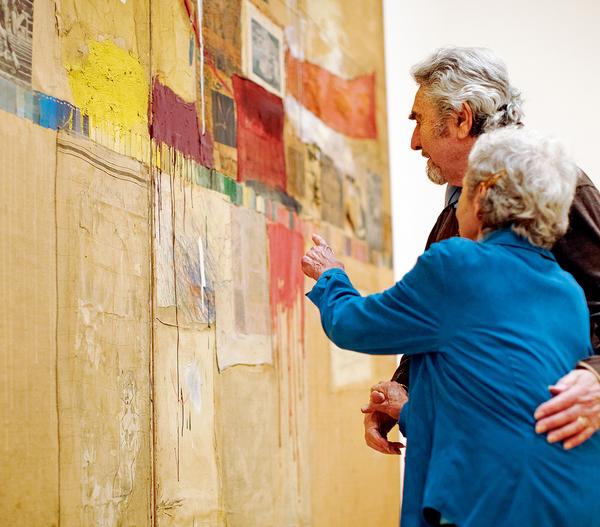

|

Attractions must learn to offset, balance or even counteract the growing digital realm |
|

|
New market

18. Panama

In 2016 a new lane will open in the Panama Canal, doubling the capacity of the route that links the Pacific and Atlantic Oceans and effectively creating a cruise ship superhighway.
The canal, a visitor attraction in its own right, will soon be able to host the world’s largest cruise ships, which disembark 5,000 passengers at a time. Notably, cruise liners are also gaining 6.55 per cent more customers annually.
As the canal forms the foundation of Panama’s economy, it’s predicted that GDP will double in the next eight years. All of these signs are good news for existing and upcoming attractions operators who are planning to invest in the country.
Panama has recently pulled out all the stops to create the world’s first museum of biodiversity, the Biomuseo.
This piece of statement architecture, rises from the Panama Canal in a concertina of primary colours. Designed by internationally renowned architect Frank Gehry, whose wife is Panamanian, the museum focuses on the importance of the isthmus and its biodiversity.
The scientific content was researched and curated by teams from the Smithsonian and the University of Panama, with galleries by Bruce Mau Design.
We expect to see further growth in both the attractions and tourism sectors.
| |
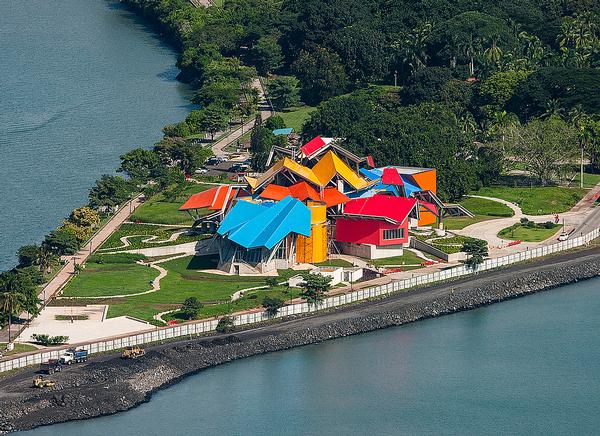

|
| photo: FERNANDO ALDA |

Frank Gehry’s Biomuseo is the first new attraction to open in Panama as its new canal comes on-stream |
|
|
|
| | | | | | | | | | | | | | | | | | |
